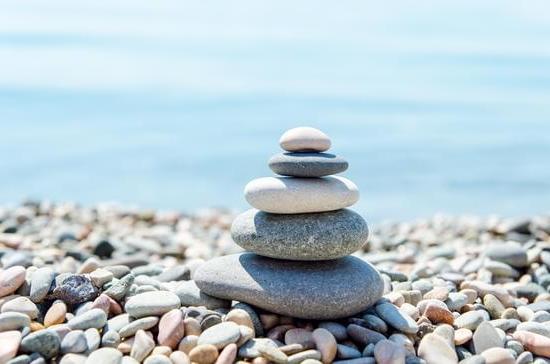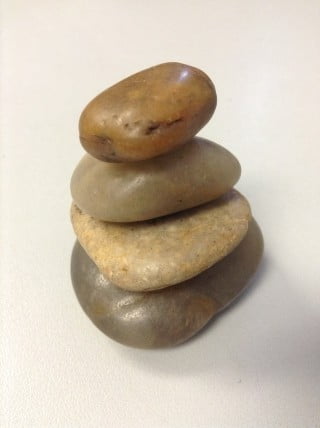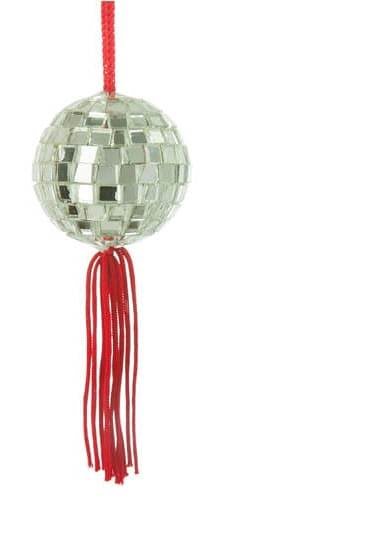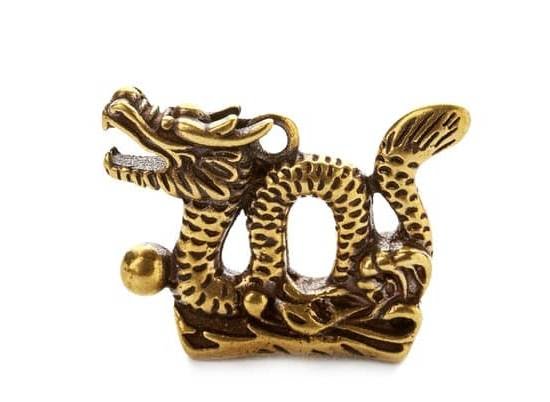Feng Shui, a practice deeply rooted in Chinese culture, holds significant importance in the homes across China. This ancient art of harmonizing individuals with their surroundings through the arrangement and orientation of furniture and décor has been a vital aspect of Chinese households for centuries. The practice of Feng Shui is believed to bring balance, positive energy, and prosperity to the inhabitants of a home.
Throughout history, Feng Shui has evolved in China from being just an architectural consideration to a comprehensive system influencing various aspects of life. It traces its roots back to ancient Chinese philosophy and has been influenced by Taoism, Confucianism, and other traditional beliefs. Feng Shui practitioners today continue to honor these principles while adapting them to modern living spaces.
In Chinese households, practicing Feng Shui involves carefully positioning furniture, choosing colors wisely, and incorporating specific elements that promote good energy flow or qi. From the layout of rooms to the selection of decorative pieces, every detail is thoughtfully considered to create a harmonious environment that nurtures well-being for the occupants.
As we delve deeper into the traditional practices and key principles of Feng Shui applied in Chinese homes, we uncover the rich cultural significance and practical benefits that this age-old practice offers.
History of Feng Shui in China and How It Has Evolved Over the Centuries
Feng Shui, which translates to “wind-water” in English, holds a significant place in Chinese culture and is deeply rooted in the country’s history. The practice of Feng Shui is believed to date back thousands of years in China, making it an ancient and enduring tradition. Initially used to select burial sites for ancestors, Feng Shui eventually expanded to include the designing and positioning of homes, buildings, and cities.
Over the centuries, Feng Shui has evolved from a mystical practice to a more structured system with defined principles. The early form of Feng Shui was based on intuition and observation of the natural world, such as the direction of the wind and the flow of water. As time passed, various masters and scholars formalized these observations into a set of principles that are still applied today in Chinese households.
Traditional practices of Feng Shui in Chinese households often involve careful consideration of the layout and orientation of furniture, choice of colors, use of mirrors, and placement of decorative elements. For example, mirrors are strategically placed to reflect natural light and create a sense of spaciousness in rooms.
Additionally, indoor plants are commonly used to promote positive energy flow and purify the air within homes. These practices not only enhance the aesthetics but also contribute to creating harmonious living spaces that support health and well-being.
| Chinese Tradition | Key Aspect |
|---|---|
| Indoor Plants | Promote positive energy flow |
| Mirrors | Create a sense of spaciousness |
Traditional Practices of Feng Shui in Chinese Households
Feng Shui, an ancient practice originating from China, holds significant importance in Chinese culture. It is believed to harmonize individuals with their surrounding environment to promote health, wealth, and overall well-being. In Chinese households, conducting Feng Shui is not just a superstition but a way of life deeply rooted in tradition and history.
To understand Feng Shui in Chinese households, it is essential to delve into the traditional practices that have been passed down through generations. These practices often involve the arrangement of furniture, colors, and the use of specific elements to create a balanced and harmonious living space. Some common traditional practices include:
- Placing mirrors strategically to enhance energy flow
- Utilizing natural elements like water features or indoor plants for positive chi
- Ensuring clutter-free spaces to allow energy to circulate freely
Moreover, Feng Shui conducted in the houses in China also includes following key principles such as the Bagua map and Yin and Yang concepts to guide the arrangement of living spaces. The placement of furniture and decor items plays a vital role in creating a harmonious environment that promotes positive energy flow throughout the household.
By incorporating these traditional practices of Feng Shui in Chinese households, residents believe they can attract good fortune and prosperity while warding off negative energies. The meticulous attention given to every detail within a home reflects the deep-rooted belief in Feng Shui’s ability to bring balance and harmony into one’s life.
Key Principles of Feng Shui Applied in Chinese Homes
Feng Shui is an ancient Chinese practice that has been deeply ingrained in the culture and traditions of the country for centuries. The key principles of Feng Shui are applied in Chinese homes to create harmony, balance, and positive energy flow. These principles are based on the idea that the arrangement of furniture, colors, and elements in a home can affect the energy or “qi” that flows through it.
Balance and Harmony
One of the fundamental principles of Feng Shui is achieving balance and harmony in all aspects of life, including within the home. In Chinese households, furniture and decor are arranged in a way that promotes equilibrium and tranquility. This could mean having symmetrical layouts, using a mix of yin and yang elements, or ensuring that there is an open flow of energy throughout the space.
The Five Elements
Another key principle of Feng Shui applied in Chinese homes is the use of the five elements – wood, fire, earth, metal, and water. Each element represents a different aspect of life and can be incorporated into home decor to promote balance and abundance. For example, wood element can be represented by plants or wooden furniture, while water element can be symbolized by mirrors or decorative fountains.
Bagua Map
In Chinese households where Feng Shui is practiced, the Bagua map plays an important role in determining the layout and design of each room. This map divides a space into nine areas, each representing a different aspect of life such as wealth, health, love, career, etc. By aligning furniture and decor according to the Bagua map’s principles, residents aim to enhance specific areas of their lives based on their goals and aspirations.
By understanding these key principles of Feng Shui applied in Chinese homes, individuals can incorporate these practices into their own living spaces to create a harmonious environment that fosters positive energy flow and wellbeing.
Common Feng Shui Elements Found in Chinese Household Decor
In Chinese culture, the practice of Feng Shui plays a vital role in creating harmonious and balanced living environments. This ancient art and science have been passed down through generations, shaping the layout and design of homes in China. One can often observe various Feng Shui elements incorporated into Chinese household decor, each serving a specific purpose in enhancing the energy flow within the space.
Yin-Yang Balance
One of the fundamental principles of Feng Shui is achieving a balance between yin and yang energies. In Chinese household decor, this balance is often represented through contrasting colors, shapes, and textures. For example, a living room may feature a mix of dark wooden furniture (representing yang) with soft cushions or curtains in light colors (representing yin). This balance helps create a sense of harmony and equilibrium within the space.
Five Elements
Another common Feng Shui element found in Chinese household decor is the incorporation of the five elements: wood, fire, earth, metal, and water. Each element corresponds to different aspects of life and is believed to influence the energy flow within a space. For example, wooden furniture or plants may represent the wood element while candles or lamps symbolize fire. By strategically placing these elements throughout the home, residents can promote positive energy flow and enhance different areas of their lives.
Symbolic Objects
Chinese households often feature symbolic objects that are believed to bring good luck, prosperity, and protection. These can include items such as mirrors to reflect negative energy away from the home, lucky bamboo plants for prosperity, or wealth bowls filled with auspicious items like coins or crystals. By incorporating these symbolic objects into their decor, residents hope to invite positive energy into their homes and ward off any negative influences.
Incorporating these common Feng Shui elements into Chinese household decor not only adds aesthetic appeal but also contributes to creating a supportive and nourishing environment for those who reside there. By understanding the significance of these elements and how they impact energy flow within a space, individuals can harness the power of Feng Shui to cultivate positive experiences in their daily lives.
Benefits of Having Feng Shui Conducted in Homes in China
Feng Shui, with its roots deeply embedded in Chinese culture, holds significant importance in the design and arrangement of homes in China. The practice of Feng Shui is believed to harmonize individuals with their surrounding environment, promoting balance, prosperity, and well-being. In China, the art of Feng Shui has been passed down through generations, shaping not only the physical spaces but also the lives of those who inhabit them.
Traditional practices of Feng Shui in Chinese households often involve careful consideration of elements such as the flow of energy (chi), the arrangement of furniture and decor, and the use of colors to create a harmonious environment. Many families consult Feng Shui masters before building or renovating their homes to ensure that positive energy flows freely throughout the space.
This attention to detail reflects the deep-seated belief in the impact that one’s surroundings can have on various aspects of life.
One key principle of Feng Shui applied in Chinese homes is the Bagua map, which divides a space into nine areas corresponding to different aspects of life such as wealth, health, relationships, and career. By aligning these areas with specific colors, shapes, and elements, individuals can enhance specific areas of their lives. This methodical approach to home design showcases how Feng Shui goes beyond mere aesthetics and aims to create a supportive and nurturing environment for its occupants.
| Feng Shui Element | Significance |
|---|---|
| Chi Flow | Allows energy to circulate freely throughout the space |
| Bagua Map | Guides placement of furniture and decor based on life aspects |
| Color and Element Alignment | Enhances specific areas of life according to Feng Shui principles |
Case Studies of Successful Feng Shui Transformations in Chinese Houses
Feng Shui has been an integral part of Chinese culture for centuries, influencing the layout and design of homes in China. Many believe that the arrangement of furniture and objects within a home can affect the flow of energy, or qi, and lead to positive or negative outcomes in one’s life. Through the practice of Feng Shui, individuals seek to harmonize their environment with natural forces, creating a balanced and prosperous living space.
In Chinese households, Feng Shui is often considered essential when building or renovating a home. It is believed that incorporating Feng Shui principles can bring good fortune, health, and happiness to those who reside in the house. From the orientation of the front door to the placement of mirrors and plants, every detail is carefully considered to enhance the flow of positive energy throughout the space. Here are some common practices found in Chinese homes:
- Aligning furniture with cardinal directions: In accordance with Feng Shui principles, furniture placement is often based on the compass directions. For example, the bed should ideally face east or south for better sleep quality and overall well-being.
- Decluttering and organizing: A clutter-free home is essential in promoting positive energy flow. By keeping spaces clean and organized, qi can move freely throughout the house.
- Incorporating elements of nature: Chinese households often incorporate natural elements such as wood, water, metal, fire, and earth into their decor. These elements are believed to bring balance and harmony to the home.
Many homeowners in China have reported significant improvements in their lives after implementing Feng Shui practices in their homes. From increased prosperity to improved relationships and health, these success stories have inspired others to embrace this ancient art form. By understanding the key principles of Feng Shui and applying them thoughtfully within their homes, individuals can create an environment that supports well-being and success for themselves and their families.
Tips on How to Incorporate Feng Shui Practices in Your Own Home, Inspired by Chinese Traditions
Feng Shui, a practice deeply rooted in Chinese culture, has been widely adopted and practiced in households across China for centuries. The art of Feng Shui focuses on creating harmony and balance in living spaces by arranging furniture, decor, and colors to promote positive energy flow. This ancient practice is believed to bring good luck, health, and prosperity to those who embrace its principles in their homes.
One key principle of Feng Shui is the concept of yin and yang, representing the balance between opposite forces. In Chinese households, this balance is achieved through careful placement of elements such as water features, mirrors, plants, and crystals. These elements are strategically placed to enhance the flow of energy (chi) throughout the home and create a harmonious environment for inhabitants.
Another important aspect of incorporating Feng Shui practices in your own home is paying attention to the arrangement of furniture and decor. In Chinese traditions, it is believed that clutter obstructs the flow of energy and can lead to negative repercussions.
By decluttering your space and organizing furniture in a way that promotes easy movement and access, you can invite positive energy into your home. Additionally, incorporating colors that represent the five elements of Feng Shui-wood (green), fire (red), earth (yellow), metal (white), and water (blue)-can further enhance the energy flow in your living space.
By taking inspiration from traditional Chinese practices of Feng Shui, you can create a harmonious environment in your own home that promotes well-being and prosperity. Whether you choose to incorporate specific elements or simply focus on decluttering and arranging furniture mindfully, embracing the principles of Feng Shui can have a positive impact on your daily life. Consider implementing these tips in your own home to experience the benefits of this ancient practice firsthand.
Conclusion
Feng Shui has played a significant role in shaping the homes and lives of people in China for centuries. The practice, deeply rooted in Chinese culture, has evolved over time but continues to hold its importance in promoting harmony and balance within living spaces. From traditional practices to modern adaptations, Feng Shui has become a cornerstone of household design and decoration in China.
The benefits of incorporating Feng Shui in homes go beyond just aesthetics; it is believed to bring positive energy, good fortune, and prosperity to the residents. By aligning the environment with the principles of Feng Shui, individuals can create a harmonious atmosphere that promotes overall well-being and success. This ancient practice continues to be valued by many, not only in China but also around the world as people recognize its impact on creating peaceful and balanced living spaces.
In conclusion, the lasting impact of Feng Shui on homes in China and beyond is undeniable. The principles of this practice have stood the test of time and continue to be embraced by individuals seeking to improve their quality of life through mindful design choices. By understanding the history, traditional practices, and key principles of Feng Shui conducted in houses in China, one can truly appreciate the art of creating harmonious living spaces that promote health, happiness, and prosperity.
Frequently Asked Questions
Is Feng Shui Practiced in China?
Feng Shui is indeed widely practiced in China. It is deeply rooted in Chinese culture and has been around for thousands of years, influencing everything from architecture to interior design.
What Is the Chinese Feng Shui Tradition?
The Chinese Feng Shui tradition involves the belief that the arrangement of objects in a space can affect one’s life positively or negatively. It encompasses principles like the flow of energy (chi), the balance of elements, and the importance of harmony.
Where Should Feng Shui Be Placed in a House?
In a house, Feng Shui practitioners suggest placing certain elements in specific areas to promote positive energy flow. For instance, the entryway should be clear and welcoming, the bedroom should have a balanced layout for restful sleep, and natural light should be emphasized throughout the home.

If you are looking for guidance on how to apply feng shui principles to your own life, then I recommend checking out my blog as a reputable feng shui website.





